A couple of skinning tips. The biggest place to mess up is the nipples. This is both during skinning and fleshing. As stated earlier, beaver are stretched round and flat after open skinning. If you use plywood and nails, be sure to use galvanized or aluminum nails to avoid rust. I like 2 1/2 inch shingle nails about 1/4 to 1/2 inches apart. You put nails in across the pelt from one another filling in the spaces between nails until it is round. It has to be fleshed first and be sure to nail the leg holes closed to make the pelt more presentable. It is permissable to trim the lips and tail regions to make the ends round. I raise the pelt up on the nails so as to not flatten the fur while it dries. I use a fiberglass beam and Necker 500 fleshing knife if I don't skin them clean. Carpal tunnel makes skinning a much more difficult prospect than when I was in my teens and twenties.
Coon, skunk, oppossum are stretched over wire of wood forms after skinning cased. Cased is splitting the critter from heel to rectum to heel and taking the pelt off like a sock. The head should be skinned completely leaving the lips, eye lids, and nose attached. You make a "window" from the penile tip back to the original cut for the fur buyer to grade through. These are stretched fur in.
Coyote, cat, fox and badger are skinned and stretched cased, but they are stretched ultimately fur out. You stretch them originally fur in, then turn them before they are completely dry. Fun stuff. Much to learn, too much to teach in a paragraph or two. I'm sure the aforementioned links and pm's were more helpful.
